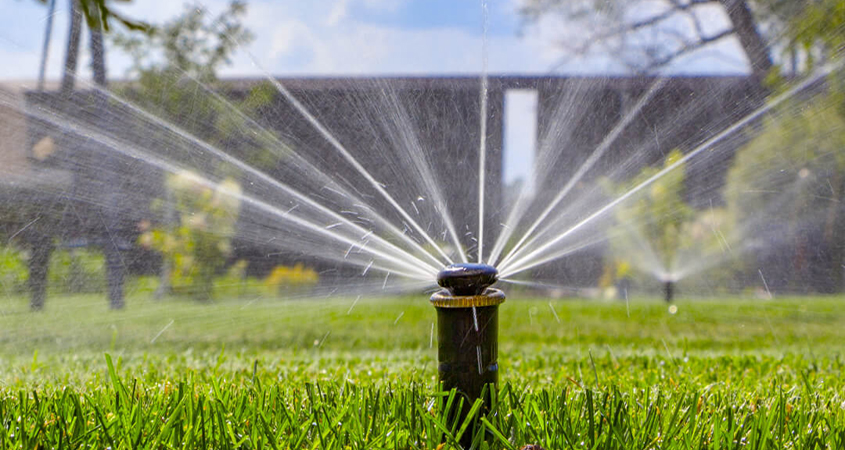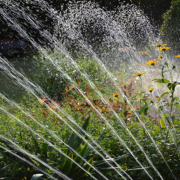Hydrozones are the different areas of your landscaping where plants with similar irrigation needs are grouped together. This allows you to apply water as efficiently as possible through rainwater catchment, supplemented by irrigation, while avoiding unnecessary and wasteful overwatering.
Sun exposure, slopes, and plant root depths need to be taken into consideration along with plant water needs. All these characteristics create specific hydrozones. Even when the soil is the same, a full sun area is one hydrozone, full shade areas are another, and mixed exposure areas create yet a third. Shade from buildings or trees can also raise or lower temperatures.
Each irrigation valve should water its own separate hydrozone populated by plants with similar water needs, living conditions, and root depths. Plants with high water needs such as vegetables or lawns need to be grouped into their own hydrozone. Sprinklers or emitters on this zone shouldn’t overwater anything else.
Don’t overdo it with your irrigation

Inspect your sprinkler heads regularly to make sure they are not obstructed or watering onto the pavement or other hardscapes. Photo: Irrigation Association
Each hydrozone must be able to handle enough water volume for every emitter to work properly. Hydrozones should have individual sprinklers or emitters delivering only the required amount of water, spaced out so every plant in the hydrozone receives an equal and accurate amount. If two sprinklers cross over one another, plants receiving water from both will receive more water than needed. In this example, sprinklers should be turned away from each other, or be reset farther apart. Professional landscapers call this “matched precipitation.”
This article is part of a year-long series inspired by the 71-page Sustainable Landscapes Program guidebook available at SustainableLandscapesSD.org. The Water Authority and its partners also offer other great resources for landscaping upgrades, including free WaterSmart classes at WaterSmartSD.org.





